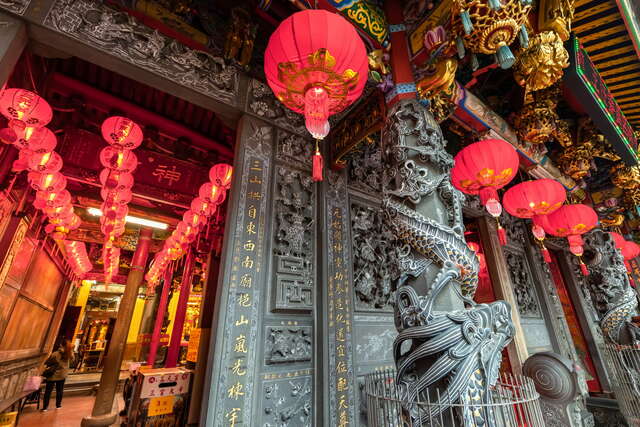Bade Sanyuan Temple Introduction
In Bade, Taoyuan, there is a traditional temple with both historical and artistic value—Bade Sanyuan Temple. This site is not only a spiritual anchor for local residents but also a cultural attraction worth savoring for travelers. A visit to Sanyuan Temple reveals that it is more than just a place for worship; it is a journey of interaction with history, art, and local customs. A gathering point for community beliefs: The oldest San Guan Da Di temple in Taoyuan, Sanyuan Temple was established during the Qianlong or Jiaqing era of the Qing Dynasty, boasting over two hundred years of history. Initially built by the Qiu and Lu families as a faith core, it symbolizes the fusion and harmony of ethnic groups. The temple primarily enshrines San Guan Da Di, representing peace and safety in the realms of heaven, earth, and water, earning it the nickname "Bakuazuo Grand Temple." It remains a major center of belief for residents living within ten miles. A vibrant spiritual atmosphere with a multitude of deities: This temple houses several deities in addition to the main one, San Guan Da Di, including Tian Shang Sheng Mu, Zhu Sheng Niang Niang, Tian Guan Wu Cai Shen, Fu De Zheng Shen, Tai Sui Xing Jun, Wen Chang Di Jun, and Yu Huang Da Di. In the air filled with incense, the deities are believed to bless the devotees’ wishes. Worshippers line up to pay their respects, adding a warm human touch to this ancient temple. The beauty of unique craftsmanship: Sanyuan Temple itself is an artistic treasure trove and a living textbook of traditional crafts. The craftsmanship of masters like Ye Jinwan shows a robust and powerful style, while Zhang Huaguang’s portrayals of deities are lively and expressive, and Chen Tianqi’s pieces of Jianzhou pottery exude a classical aura. From the ridge carvings to the wall paintings, every corner embodies the artisans' ingenuity. Visiting here feels like stepping into an open-air craft museum, where every detail deserves close inspection. Festive temple activities throughout the year: From birthday celebrations to the Zhongyuan Pu Du, Sanyuan Temple's ritual activities occur year-round. In the first month, there is the Yu Huang Da Di Wan Shou event and the Bodhi Rider blessing ceremony; in March, they celebrate Tian Shang Sheng Mu's birthday; in July, they hold Zhongyuan Pu Du; and in October, they commemorate the birthday of Shui Guan Da Di. Each ceremony is not only a ritual but also an extension of local customs and cultural heritage, filled with lively and meaningful atmospheres. The grand turtle-raising event on the second day of the second lunar month: The most eye-catching celebration is undoubtedly the "Qiqing" event on the second day of the second lunar month. The temple prepares a giant glutinous rice peace turtle weighing over a thousand kilograms for worshippers, symbolizing health and longevity. Those who draw lots may take the turtle home, symbolizing the carrying away of good fortune. The event is spectacular and lively, considered a significant local faith celebration.

































